Why We Jump: An Interview with 5 BASE Jumpers of Color
Shawn Brokemond, an African American female BASE jumper, plummets towards the Snake River after jumping from the Perrine Bridge in Twin Falls, Idaho. Photo courtesy of Shawn Brokemond.
This article is for editorial purposes only. If you want to learn how to BASE jump, please consult a mentor at your drop zone.
Think of every nightmare you’ve had where you’re falling—plummeting towards the ground—only to wake up, heart pounding and breathless. For most of us, those nightmares will never become a reality but for some people, falling from fixed objects, like cliffs or buildings, is a dream come true!
Welcome to the adventure sport of BASE jumping. It’s a dangerous activity, where a single mistake can cause serious injury or death. That doesn’t make it any less popular for athletes all around the world who rely on a unique mix of technical skills, emotional awareness, and risk management to stay alive. The BASE jumpers I’ve been lucky to meet are intensely dedicated, making big, worthwhile tradeoffs in their lives to progress and have fun in the sport.
But it can’t be overstated—the stakes are high in BASE jumping, and a single mistake could cost you your life. All right, disclaimer aside, let’s jump in!
I asked five BASE jumpers of color to explain why they jump. They shared that the rewards are worth the risk to them—whether that’s being out in nature, developing self-reliance, achieving flow states, and above all, feeling alive. And as exciting of a sport as it is, it’s also not for show or clout. It’s about fun, self-discovery, and deepening your relationship with yourself.
Interview responses have been edited for brevity and clarity.
Shawn’s travels in the sport have taken her abroad to popular BASE destinations like the Lauterbrunnen Valley in Switzerland. Photo courtesy of Shawn Brokemond.
Shawn launches herself from a unnamed cliff in Europe. Photo courtesy of Shawn Brokemond.
What is BASE jumping?
BASE jumpers jump off of fixed objects with single parachute systems. The acronym “BASE” stands for building, antenna, span (bridges), and earth—all fixed objects that appeal to jumpers for different reasons.
“With BASE jumping, I can go out in nature, find a cool object, and have an amazing experience,” said BASE jumper and paraglider pilot, Ben Yue. “I don’t have to worry about being surrounded by people at the drop zone.”
How does it differ from skydiving? Skydivers free-fall from aircraft using a double parachute system that holds a main and backup canopy, and this provides for a wide margin for error in a semi-controlled environment.
BASE jumpers use single parachute systems. “In BASE jumping, there’s not enough time to extract a second parachute, which is why you only have one,” says Nicole, an experienced BASE jumper (name changed). “Whatever comes out, you deal with it.”
When a malfunction happens on a BASE jump, you don’t have the time to “cut away” a bad main canopy and deploy a backup, as you would in skydiving.
In the United States, skydiving operations must follow federal requirements for aviation. BASE jumping doesn’t have this kind of regulation, although the tight-knit community has its own unwritten rules and traditions. It makes for an environment that demands self-reliance, but where the rewards are potentially greater.
“No one else is inspecting your gear, seeing if you’ve had a repack, or checking your lines for you,” said O’Shea Abney, a BASE jumper living in Twin Falls, Idaho, “You’re out there surviving on your own—which is so scary—but it makes me feel alive.”
O’Shea Abney smiles before a BASE jump at the Perrine Bridge in Twin Falls, Idaho. The 486-ft bridge is open to legal BASE jumping year round. Photo courtesy of O’Shea Abney.
How do you become a BASE jumper?
The BASE jumpers I spoke to recommended learning to skydive before taking a BASE jumping course at a location where it’s legal 365 days a year, like the Perrine Bridge in Twin Falls, Idaho.
“Skydive as much as you can,” said BASE jumper and wingsuit pilot Viswa Gundavarapu. “Skydiving is a very regulated sport that teaches you a lot about flying your body and parachute. It prepares your mind for basic emergency procedures, and, above all, it’s so much fun.”
As tempting as it may be to skip steps, it’s crucial to build skills—particularly canopy skills—in the controlled (and relatively safe) skydiving environment before learning how to BASE jump.
An alternative to doing an introductory course is to find a trusted mentor to teach you. Shawn Brokemond, a 50-year-old African American personal trainer and former educator, initially traveled to the Perrine Bridge with her husband and his mentor to support his goal of becoming a BASE jumper.
Even after telling herself she would never BASE jump, she still found herself walking out to the bridge with a BASE rig on her back. “I had done a bunch of skydives and knew what that felt like. What changed my mind was being at the Perrine and seeing everybody have such a good time,” says Shawn. “I also watched the process of jumping and packing over, and over and saw all the measures they took for safety. I thought, ‘I can do this.’”
Why do you BASE jump?
I asked the athletes why they jump, even though the stakes are so high. What I found is that BASE jumping has helped them develop self-reliance, enter flow states, increase self-awareness and live intentionally.
O’Shea: I like the technical aspects of BASE jumping and I’m so thorough with my processes. I really like my life in my own hands from start to finish—it’s such a freedom.
In skydiving, there’s more broadcasting of “Hey, I’m doing this and that!” BASE jumping is not for anyone else—it’s for me. It’s legitimately for me.
Ben: BASE jumping is not like skydiving in the sense that you don’t have a backup parachute, and you don’t get a second chance. It comes down to knowing your gear inside and out, checking your gear, and being self-reliant. It’s a 100% independent sport. Yes, you’re with your friends, but at the end of the day, it’s up to you to save your life and actually survive.
You get into a flow state, where you’re not focused on anything but the “right now”, and this moment. It’s those couple of seconds where everything else turns off. It really makes you appreciate what’s important and what’s not, and helps you realize that your life is at stake all the time.
With BASE jumping, I’ve developed a sense of awareness that I’m okay with taking these risks and I’m comfortable with my mortality. It’s helped me live my life for today and for the moment, and to understand that life is fleeting. It’s helped me live life purposefully.
Nicole: BASE jumping makes me really, really happy and it makes me feel alive again especially after working long shifts. You’ve got the day-to-day: life, family, and whatever’s bugging you. When I stand at the edge of an object, that’s my time. It’s the only time I’m not thinking about anything else.
You’ve got a few seconds to take a nice deep breath in, take a deep breath out. Your feet leave, and you’re not thinking of anything except, “Wow, I get to jump off this thing, fly, and float down.” For this moment, right now, it’s just me.
BASE jumpers also enjoy the challenge of learning new skills and the sense of accomplishment that comes with the sport.
Shawn: During my first BASE jump, I stood on the edge with my toes hanging over for 30 minutes. I would get a countdown from my friend, but I didn’t go every single time. He would go “3, 2, 1, and see ya”, and every time I got ready to go, I just couldn’t do it, even though I wanted to.
I finally did it. When I got down, I said, “Oh! I get it!” because the jump worked exactly how my mentor described it to me. That was the most accomplished I felt—I was so glad I did it and felt a sense of “I got this; I can do it.”
It was the best feeling ever when my feet actually left, because I was no longer nervous. Now, every time I BASE jump, I’m terrified until my feet leave, but after that, it feels so good. I feel really calm, in control, and peaceful.
Ben: A lot of these jumps require effort outside of the actual jumping itself. We did a huge hike to get to a jump, which was a huge accomplishment. I haven’t done a ton of mountaineering quite like that, and I had a moment where I said to myself, “Ok, wow, I can do this.” It’s cool.
Nicole: I’m proud of where I’ve gotten with the approach getting to the jump. A lot of times, it’s not the jump that’s the most dangerous part—getting there is—so I’ve gotten comfortable with climbing and being on rocks. The views that I’ve seen, I would never ever hike up to if I had to hike down.
The BASE jumpers I interviewed have also experienced Nature in unique ways.
Viswa uses a hot air balloon jump as an opportunity to test his BASE rig. Hot air balloon jumps do not qualify as BASE jumps because they aren’t fixed objects. Photo courtesy of Danielle Williams
Viswa safely lands his brightly colored parachute after jumping from the north face of the Eiger in Switzerland. Photo courtesy of Viswa Gundavarapu.
Shawn: There’s a lot of excitement around planning trips around the world to BASE jump, and being able to take a whole week to BASE jump in a different country was always appealing to me.
In Lauterbrunnen, one area we hiked to had a lower exit point that you can see as you fly over it during a jump—it was a diamond-shaped feature that looked really cool from the air. You had to be able to clear that feature, and I felt so accomplished that I could jump at that level.
Lauterbrunnen was just spectacular and it looked like a postcard. From some of the exit points, you look out onto a farm area with cute manicured houses that look like Disney World. The farms had perfect hay barrels, the grass was super green, and the Eiger was in the background—it was just stunning.
Viswa: BASE jumping takes me on hikes and to places where people normally wouldn't go, like Monte Brento in Italy, the Eiger Mushroom in the Swiss Alps, and Heliboogie in Lysebotn, Norway. When I first started, I just wanted to try it out. But the thrill, science, and challenge behind each jump keeps me around. Each jump is new and different in its own sense, and many factors affect each jump even if it’s the same object.
Viswa tracks away from a 3,200-ft cliff during the annual Heliboogie in Lysebotn, Norway. Photo by Steve ‘Sparky’ Baich.
Viswa jumps off the 4,500-ft Eiger Mushroom—a popular exit point for wingsuiters—in the Swiss Alps. Photo courtesy of Viswa Gundavarapu.
What lessons have you learned through BASE jumping?
In a sport with very little margin of error, BASE jumpers are focused on pushing their mental and physical limits. I asked about the lessons they’ve learned through the sport.
Shawn: It’s important to stick to your rules that you set for yourself—your parameters—around BASE jumping. People die BASE jumping and staying within your limits hard for a lot of BASE jumpers who want to push and push, but to me, the thrill is just jumping off an object and feeling free in the air. Constantly make sure that you’re taking time to pack your rig and paying attention to conditions—jumping anyway when conditions are bad, for example, is when things happen. Stick to your rules about safety, and don’t ever go against them.
Nicole: Number one, stay humble. If you get overconfident or jump beyond your skill level, you will get hurt. You don’t jump because other people jump. If you’re not comfortable jumping off something that everyone else is jumping, it’s okay to walk off it.
You can be stoked and you can be excited, but being way too nervous or not nervous at all is an issue. When you’re a beginner, you’re more scared, so you might make safer decisions. The more experience you gain, you might think, “Oh, I’m invincible, I’m good, I know the numbers.” It’s nice to be in the middle of these two extremes, where you know the numbers and you understand what you need to do. But at the same time, you still get that feeling in your gut of, “Oh yeah, this is actually dangerous.”
Finally, you need to be able to take a few deep breaths and remember what happened on a jump. If you’ve made a mistake, you should be able to admit when you’re wrong, take instruction, and learn from it. And you should still be having fun!
Ben: Good BASE jumpers need to be self-reliant—it’s important to know you’re making good decisions and that you know your own limits. It takes a lot of emotional intelligence and humility to survive BASE jumping. It takes a lot of respect for how dangerous the sport actually is.
O’Shea: BASE jumping has put so much love into me and I give it back. I take so much time in the pack job, and that’s where the thrill starts to happen. You jump off the bridge, then you hike back up—you really have to work for it.
It’s so fulfilling. And that’s what BASE jumping is—you get out of it what you put into it. You can put your whole heart into it, and you’ll get your whole heart out.
Hope you’ve enjoyed this interview. Let us know in the comments which outdoor activities help you feel more confident and more alive!

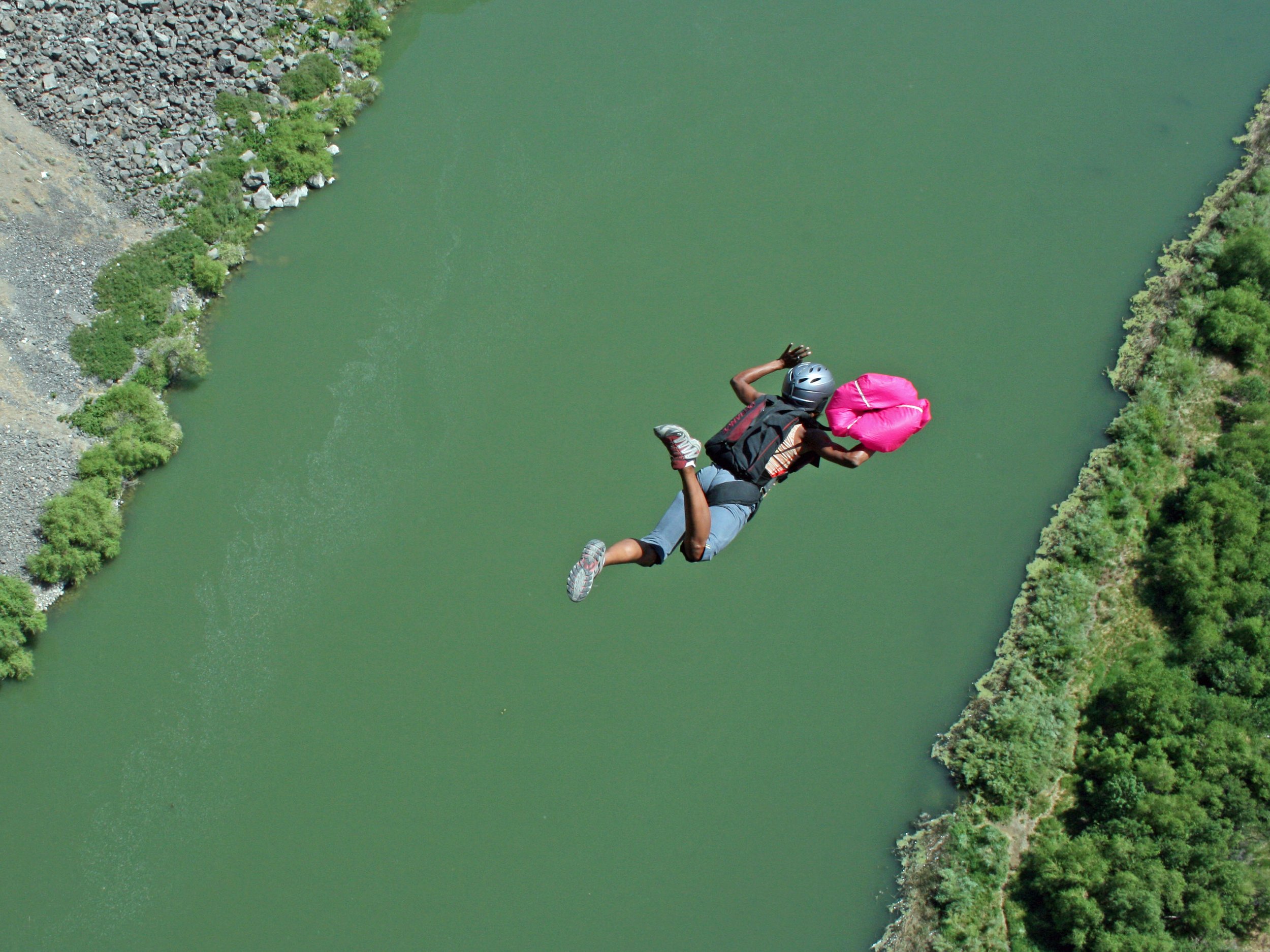

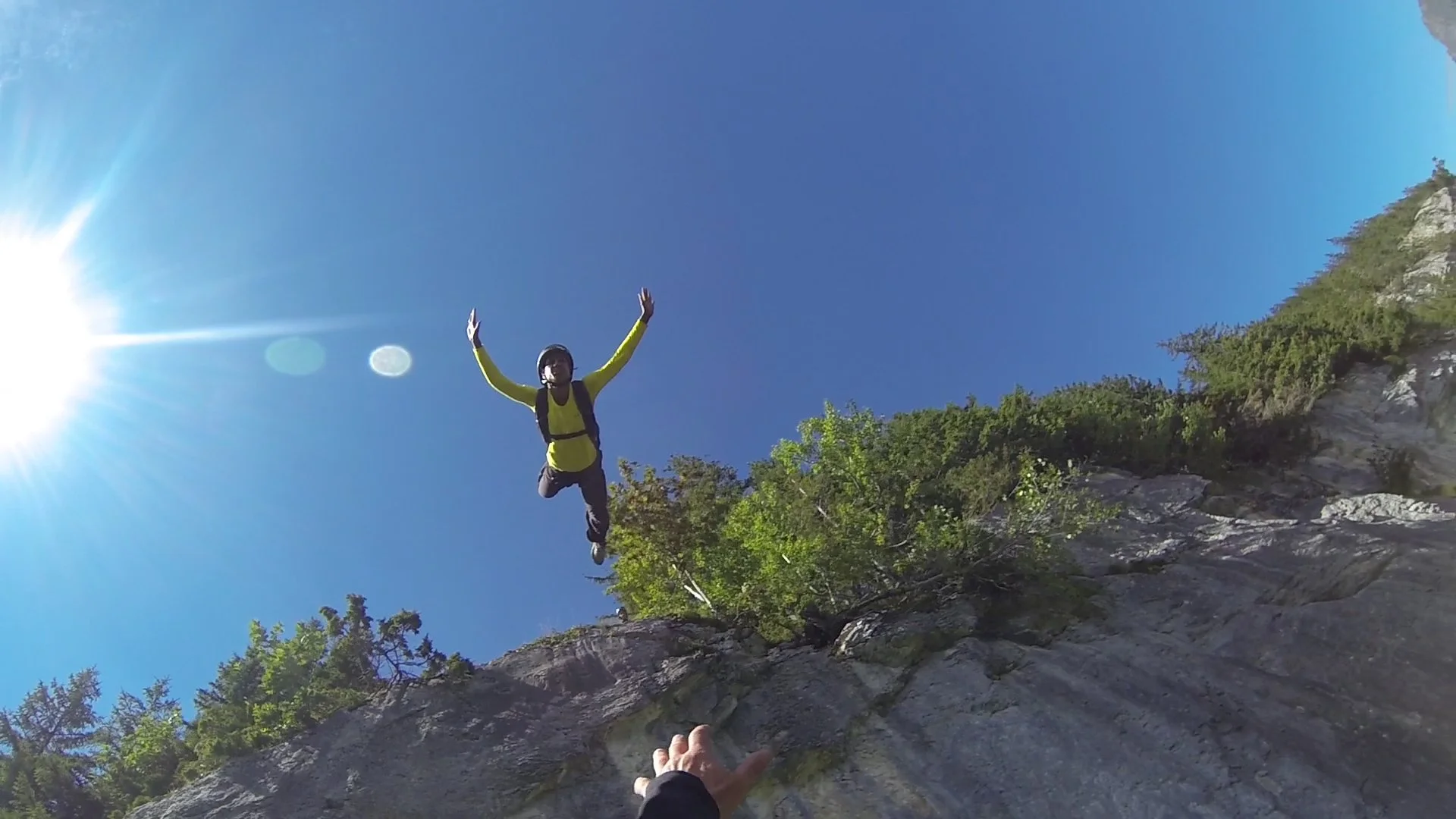
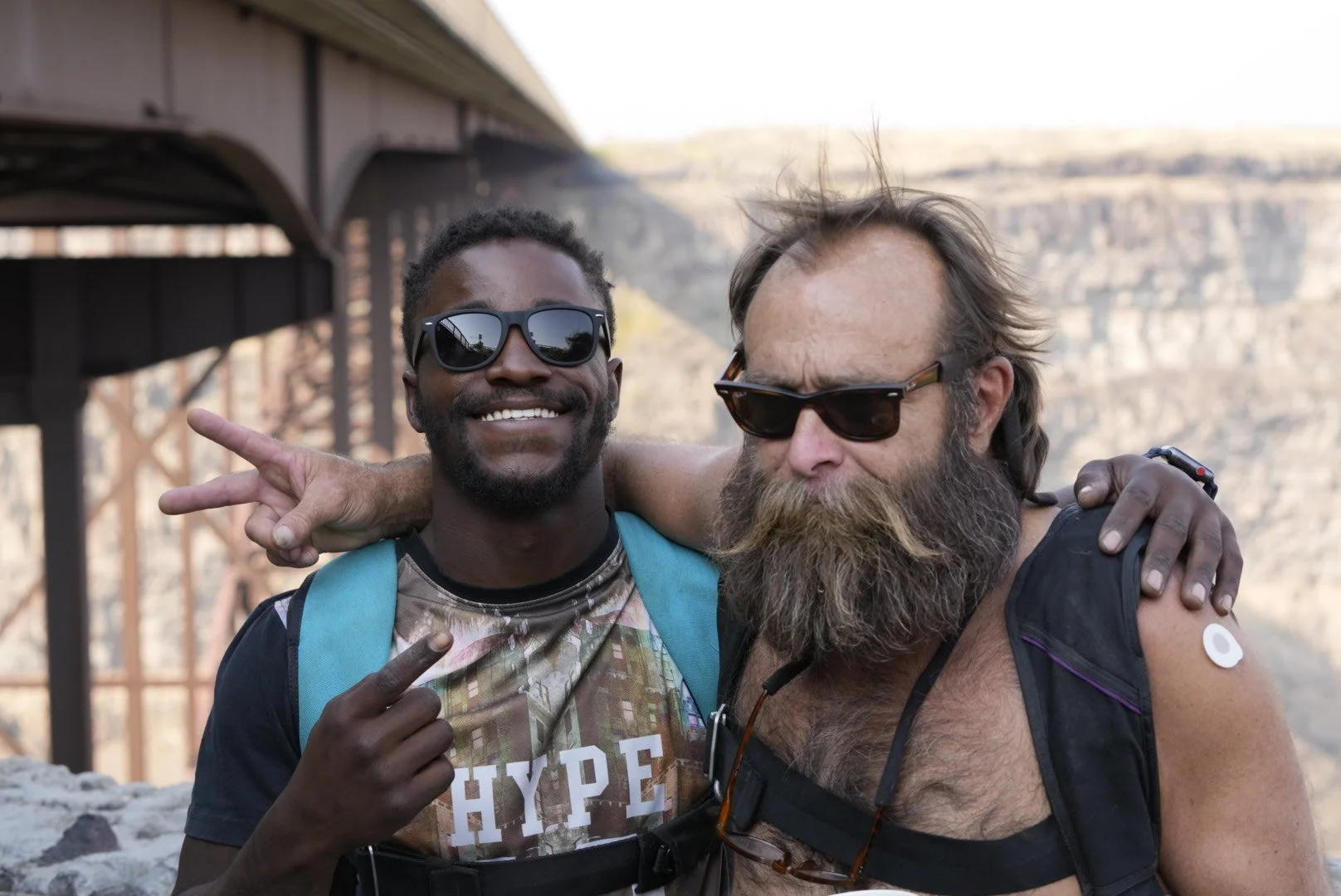

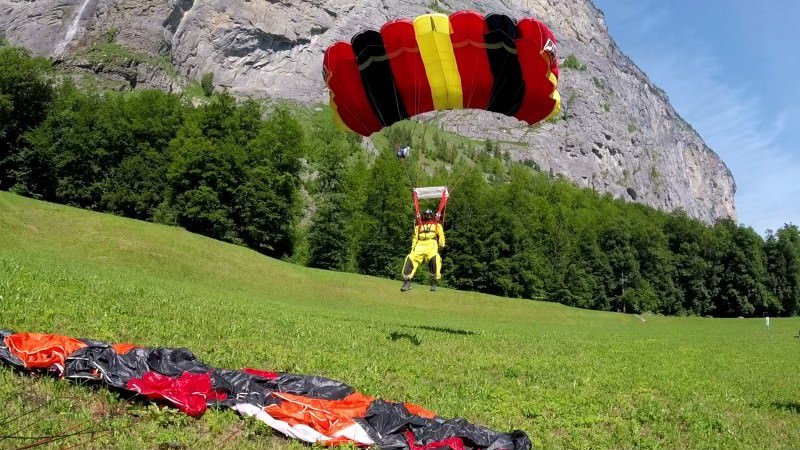
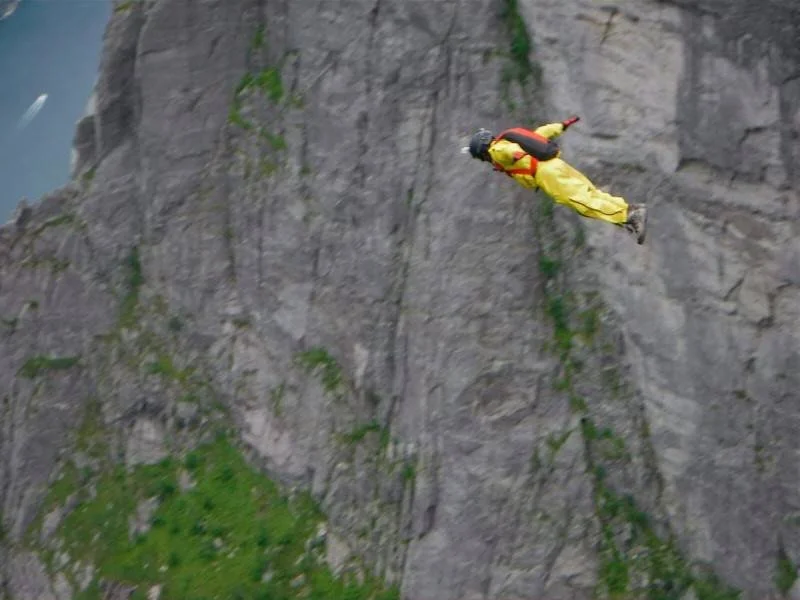
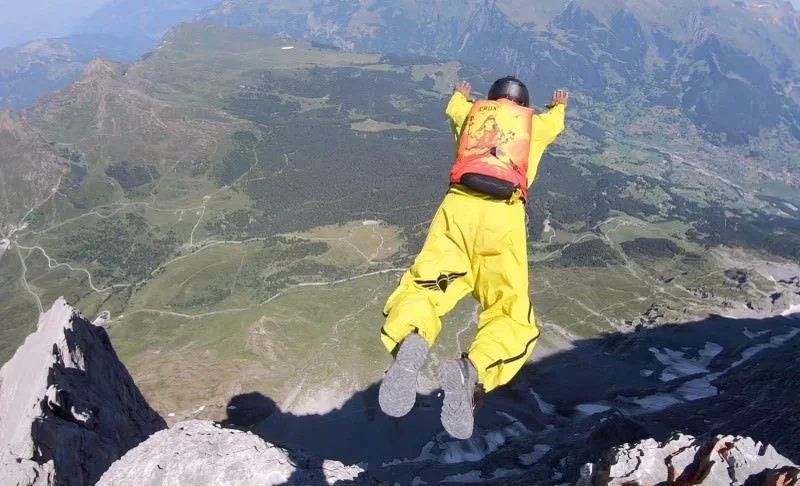











Esther Park is on a mission to help women in skydiving fit in–literally.
She left a comfortable job in scientific sales after a life-changing skydiving accident. Since then, she founded a company, Girls in Sky Places, to help women find correctly-sized gear.